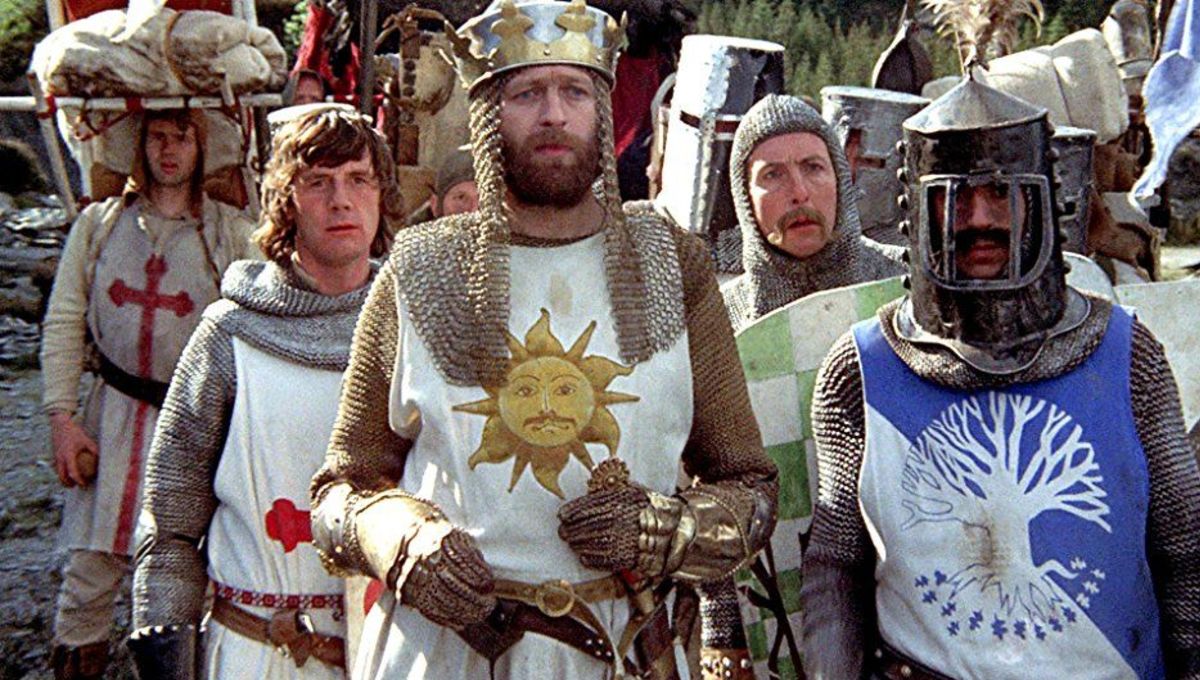Monty Python and the Holy Grail is a surrealist comedy film. It breaks the fourth wall very often, which is nothing new for surrealist comedy. Other surrealist comedy films, such as Airplanes! (1980) break the fourth wall all the time. However, unlike Airplanes!, Monty Python and the Holy Grail break the rules of filmmaking constantly. One of the rules of filmmaking is that every scene should either move the plot or develop the characters. So many scenes from Monty Python and the Holy Grail are just there to waste time and those scenes are hilarious. The rules of proper filmmaking just do not apply to Monty Python and the Holy Grail, no other movie has done this as well as Monty Python. Scenes that waste time, actors playing multiple characters in the same scene and constant genre changes are all different filmmaking rules that shouldn’t be broken but Monty Python ignores this and pulls it off perfectly.
The style of the movie is somehow incredibly modern for being made in 1975. The jokes, gags, and humor were incredibly ahead of their time. There is one scene in particular that the style that is most prevalent. At 32 minutes into the film, the genre of the movie changes from fiction to documentary. The scene is a famous historian, that’s the name given to him in the scene, is retelling the story of King Arthur and his knights. This is quickly interrupted by one of the knights riding in from off scene and killing the historian. The time frame is mixed up. Is this happening during King Arthur’s story or in the present? This also shows the film’s ability to contrast with itself. The scene starts with under dramatics, simply a historian retelling a story. This leads into a knight killing him, overdramatic, and then back to under dramatic as his death is met with the silences of the forest he is in.
This film is incredibly unconventional. It breaks every rule of filmmaking and turns them into hilarity. The film shows just enough of what it needs to do to the audience in order to make the jokes work. The ending resolve’s no one’s problems. It is a literal cop-out, with Arthur and his knights being arrested by cops and the film ends. No conclusion, no climax, all hilarity. The world of the film is unclear and ambiguous and downright confusing. The film mixes up its setting, time period, and the context in nearly every scene. The movie makes no sense and uses that lack of context, in reality, to be hilarious. The film is so abstract and absurd that you can help but laugh, it revels in its bizarreness and never lets the audience go from the confusion. As soon as the film starts, it attack’s the audience’s scene of context. And it refuses to let up in that attack.

